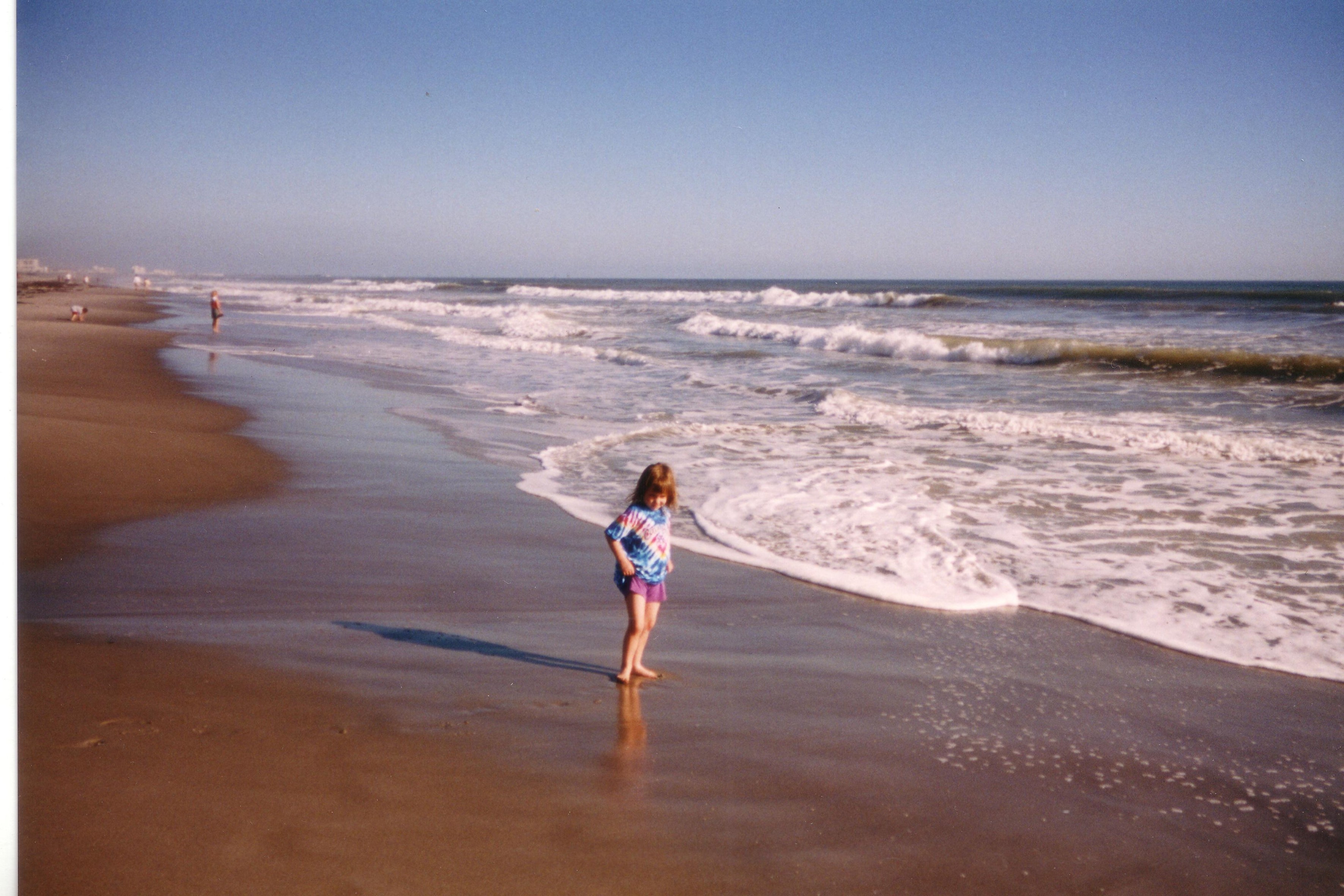
13218307040
Superscript
The Calming Effect of Our WaterScapes
The Calming Effect of Water.

With summer in full swing, our children are enjoying so many fun outdoor activities, and many of them will involve water. Did you know that science has found that being in and around water can soothe our bodies and minds? Wouldn’t you love to be able to calm your children using something as simple and available as water? Here are three ways that water can help your children relax this summer and throughout the year.
Observe It
Have you ever lost yourself in the beauty of the ocean, a flowing waterfall, or even an aquarium? You are certainly not alone. Water is known to give us a sense of peace and serenity. In fact, medical studies have found less cortisol (the stress hormone) and more serotonin, oxytocin, and dopamine (the feel-good hormones) in people as they spend time in, on, or around the ocean.
When we’re around water, our brain becomes engaged in our environment and we enjoy pleasant sensory stimulation. We become so focused that we enter a mindful state. As a result, we enjoy lower stress levels; relief from anxiety, pain, and depression; improved mental clarity and focus; and better sleep.
Water also inspires a sense of awe, as we take in the vastness of the ocean or swim in a large lake or river. These experiences make us aware of and appreciate our place in this immense world. Such awe-inspiring experiences boost our mood, making us feel happier and calmer.
Water also provides soothing sounds that help us feel calm, as evidenced by all the relaxation and sleep aids that use sounds of the ocean and the sound of waterfalls – whether it be crashing waves, the pitter patter of rainfall, or the rush of a flowing river.
Why does the sound of water cause this reaction?
Studies show that it’s based on how our brain interprets different noises. These slow, rhythmic whooshing sounds are non-threatening, which is why they calm us down. Also, the sound of water is a type of white noise that helps drown out other noises that might cause us concern.
Find ways to expose your children to awe-inspiring water scenes and sounds, such as:
· Plan trips where you can visit impressive water sights like Niagara Falls, the turquoise sea in the Caribbean, waterfalls in Hawaii, and the Great Lakes.
· Visit marine nature centers and aquariums.
· Spend time at the beach and encourage your children to express how the scene makes them feel in creative ways like writing, painting, or singing about it.
· Go fishing or on a boat ride or cruise.
· Listen to water sounds to calm your children at bedtime.
Immerse In It
Spending time in water has a tremendous soothing effect. Some believe this is because it’s reminiscent of the time we spent in our mother’s womb surrounded by amniotic fluid. It may also be related to how the water makes us feel weightless and free.
Studies show that floating can change our brain waves and reduce cortisol levels, therefore making us feel more relaxed. Swimming is also known to boost endorphins that increase feelings of well-being. Plus, the rhythmic strokes and sound of water make swimming very relaxing.
Research shows that swimming produces the same relaxation response as yoga, increasing calming chemicals and allowing us to enter a meditative state. When we swim laps, we can focus simply on our strokes and breathing, making it easy to shut off all the noises and activity going on outside the pool.
Baths and showers have been used as ways to escape daily stress for ages. By practicing some mindfulness during a bath or shower, we can really focus on the sensations on our skin and the sounds of the trickling water. This helps us be in the moment and forget our worries.
Look for opportunities for your children to spend time in water:
· Sign them up for swim lessons or join a swim team.
· Encourage them to practice floating on their back in the pool.
· Choose vacations where you can enjoy swimming and water sports.
· Turn bath time into a mindfulness moment by asking them questions about how the water feels and sounds.
Drink it
Let’s also not forget how critical water is to our health. By simply drinking enough water throughout the day, children can minimize feelings of stress and anxiety. Water plays such an important role in how our body functions. All of our organs, including our brain, need water to work properly. If we are dehydrated, our body is strained and we can become stressed and edgy. Dehydration can actually cause symptoms that feel like anxiety, such as dizziness, muscle fatigue, headache, feeling faint, increased heart rate, and nausea.
Dehydration has also been linked to higher cortisol levels. According to the Calm Clinic, water appears to have natural calming properties. Drinking water can be soothing, and our body can benefit from the added hydration when we are stressed.
It is so important that we encourage our children to drink to stay hydrated every day to help them stay calm and balanced. The amount of water a child needs depends on several factors like activity level and local weather, but in general children should drink at least six to eight cups of water per day.
Your children will probably need more water if they’re participating in sports. It’s suggested that they drink a half cup to two cups of water every 15 to 20 minutes while exercising. For specific recommendations, see the Dietary Reference Intakes(DRIs) developed by the Institute of Medicine (IOM).
As one of our most important natural resources, water provides so many benefits including improving our health and happiness. Have fun exploring new ways for your children to enjoy water through their senses – and you will be grateful for how calm they are as a result.
Our Incredible Waterscapes Guide For waterloving Kids
Now, I’ll let you in on a little secret: while this guide may be titled “for kids,” it’s essentially for anyone who believes in the magic of summer and the joy of water. These activities are about more than just splashing around – they’re about creating moments that will be treasured for a lifetime.
So, don’t let this summer slip through your fingers without experiencing the thrill of water activities. Grab that swimsuit, sunscreen, and a sense of adventure. Whether it’s a quiet day by the lake, a wild slip ‘n slide ride, or a full-blown waterside extravaganza, let’s make this summer one for the books.
I’m not just the one typing these words; I’m right there with you, eager to make a splash, ride the waves, and savor the simple pleasures of summer. It’s not just an ultimate guide; it’s an invitation to a world of fun, where the only rule is to have a blast. So, go ahead, get wet, and dive into the magic of a water-filled summer.
What interesting wildlife live in the splash zones of our waterscapes?
All my students and my own children love spotting wildlife and learning about where they live too. They will be the caretakers of the planet and it's wildlife in the future. So we want to build up their love for connecting with wildlife whenever we can. I always plan our vacation around meeting new animals and seeing where they live. And the days we spent exploring nature are my favorite memories with my kids and students.
As we spotted insects (Like waterbugs and stiders, ladybugs and butterflies), amphibians (Like frogs and toads, newts and salamanders) turtles, snakes, rodents, (like beavers and muskrats). deer, squirrels and rabbits we talked about how they adapted to live virtually every habitat in the United States.
Because fresh water bodies are popular places to visit and vacation all over the USA, I am giving you links to the habitats that may have freshwater in them.
Our discussions always always encourage us to scout the the area more to uncover what features in that environment allow those animals to be able to live in that particular spot on our planet. However, I often study the wildlife online or by book ahead of time so I can answer my curious kids questions during our adventures. And when I can't answer a question, I respond with..."Let's look that up together when we get home." It gets alittle touchy when you come upon something that was eaten by another animal. So have a plan about how you can explain the food chain on your childrens level before you go.
Can we catch and release any of the wildlife for hands on observation?
Wildlife watching has always been one of my very most favorite things to do. I feel fortunate to live in the Finger Lakes where the wildlife are blessed to have lots of fresh water and plenty of trees. My time spent living in Florida and Colorado was filled with plenty of wildlife adventures too.
As we spotted insects (Like waterbugs and stiders, ladybugs and butterflies), amphibians (Like frogs and toads, newts and salamanders) turtles, snakes, rodents, (like beavers and muskrats). deer, squirrels and rabbits we talked about how they adapted to live virtually every habitat in the United States. As we adventured Florida and the deserts near my family in LasVegas and Arizona, I learned that the experiences that prompt meeting the actual animals in their native habitats is far more intriguing than learning from a book or even online. This is something to remember.
What ever you choose for your family, will be fine and you don't need to explain yourself to anyone. Always stay flexible and open minded to other peoples decision for their family.
What are some family activities on shore?
Don't go to wild water areas unless you plan for muddy clothing and children.
Younger children may need verbal and physical prompts to help them find things that will fascinate them and provide a story to tell.
My children always want to eat on the run, while the parents or caretaker explore the area for danger and set out boundries for nature play. I use orange cones that you can purchase anywhere.
You don't need to pack much, but what I do pack is for activities that challenges them and stirs their desire to explore and cut loose without restriction.
The wildspace always lends itself to it's unique surroundings and wildlife, so our kids explore it with a camera. They also collect nature's loose parts for crafting
Now, I’ll let you in on a little secret: while this guide may be titled “for kids,” it’s essentially for anyone who believes in the magic of summer and the joy of water. These activities are about more than just splashing around – they’re about creating moments that will be treasured for a lifetime.
So, don’t let this summer slip through your fingers without experiencing the thrill of water and shoreline activities. Grab that swimsuit, sunscreen, and a sense of adventure. Whether it’s a quiet day by the lake, a wild slip ‘n slide ride, or a full-blown water balloon extravaganza, let’s make this summer one for the books.
I’m not just the one typing these words; I’m right there with you, eager to make a splash, ride the waves, and savor the simple pleasures of summer. It’s not just an ultimate guide; it’s an invitation to a world of fun, where the only rule is to have a blast. So, go ahead, get wet, and dive into the magic of a water-filled summer.
What recreational activites are available in or on the water?
This is a FAQ description. Add more detail about this service, such as benefits, appearance, components and value